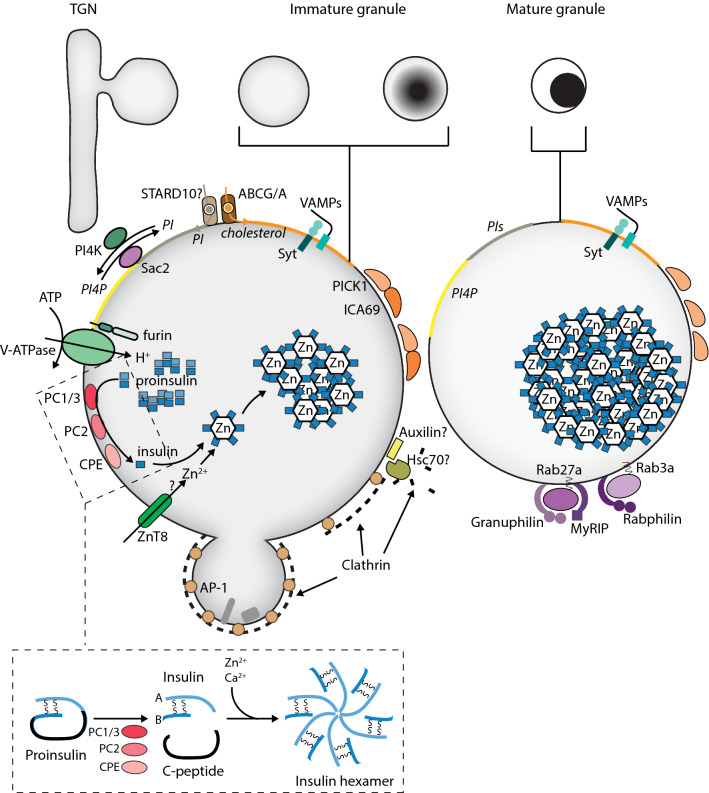Fig. 2.
Insulin granule maturation. Proinsulin processing to insulin occurs inside the granule. The proteolytic conversion of insulin requires granule acidification by the H+-transporting V-ATPase, which in turn activates the prohormone-processing enzymes (PC1/3, PC2 and CPE). Insulin is stored as a hexamer in complex with Zn2+, and at least some of the Zn2+ accumulation occurs via ZnT8-mediated transport. Granule-localized cholesterol transporters (ABCG/A) and phosphoinoside-transporting (STARD10) and modulating (PI4K, Sac2) proteins are responsible for changes in the lipid composition of the granule. During maturation, the granule shrinks due to clathrin-dependent retrieval of membrane and cargo for sorting or degradation. Maturation also involves removal of the clathrin coat, which likely depends on the action of Auxilin and Hsc70, and acquisition of factors required for granule transport and docking, such as Rab27a and Rab3 and their corresponding effector proteins (Granuphilin and Rabphilin)

